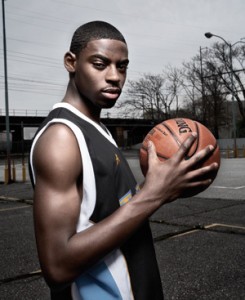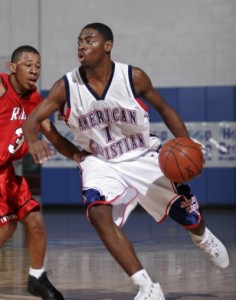By Paul M. Banks and David Kay
I wouldn’t call it “love at first sight”, but when I was in Milwaukee for the 2008 McDonald’s All-American High School Basketball game, I was enamored by what I saw. At the time, Tyreke Evans was undecided as to where he would play his college basketball, but I knew that his impact at whatever University was fortunate enough to land him would be felt immediately.
That certainly was the case as Evans eventually became the catalyst for John Calipari’s dribble-drive motion offense at Memphis. A few weeks into the season, Coach Cal made the decision to put the ball in Evans’ hands and let him run the team as their point guard instead of playing him at the two; a move that catapulted the Tigers back into the national title picture after they had fallen out of the Top 25. “I felt comfortable getting my teammates the ball making other people better. I think I’m a better player with the ball in my hands, but I’ve also been playing the two all my life. So either one, it won’t really matter to me,” Evans said at the NBA Draft Combine.
It was no surprise that Evans was a “one and done” at Memphis. If the NBA didn’t have their current rule, Evans likely would have made the jump from high school straight into the NBA. And you wouldn’t have blamed him for doing so. His physique is NBA-ready as demonstrated by his measurements at the NBA combine; 6’5” in shoes, 220 pounds with a 6’11” wingspan, the longest of any guard prospect in the draft. Evans’ ability to attack the basket seems almost effortless, to the point where I have no problem comparing his game to that of a young Dwyane Wade. (That’s quite the comparison coming from a Marquette grad.) Similar to Wade, Evans has a fearless mentality when taking the ball to the basket and tremendous instincts when it comes to scoring.
“I studied Penny Hardaway and Tracy McGrady. They were two of my favorite players growing up. But I watch LeBron, D. Wade now everybody and try to take a little piece of their moves,” Evans said before later adding that T Mac is the probably the most accurate player to compare him to.
Evans also has the same knocks against him that Wade did when coming out of college; most notably the inconsistency with his jumper and questionable shot selection. Like most young college players, both of those areas should improve over time as Evans matures. The former Tiger is also sometimes careless with the basketball, often trying to do much by himself which resulted in a less than desirable 1.1/1 assist-to-turnover ratio.
Evans is still learning the importance of being a nuisance on the defensive end. He has a great read on the ball and uses his length to get in passing lanes and create fastbreak opportunities off steals. His strength and size also allows him to be physical against equally strong opponents. If the work is put in at the next level, Evans could develop into a Wade-type defender, able to be a factor on the perimeter or in the paint.
Since the lottery was determined, I have thought Evans would be a perfect fit in Minnesota. The T-Wolves already have a combo guard in Randy Foye, but Evans could step onto that team and take over some of the ball-handling duties, opening up Foye for more perimeter shots. Evans could potentially go as high as #4 to Sacramento and won’t slip past Toronto who owns the ninth pick.
While the comparisons to Dwyane Wade are admittedly quite hefty, I have no doubt that ten years from now when we look back at the NBA Draft class of 2009, Evans will be one of the top 3 players to come out of this class.

